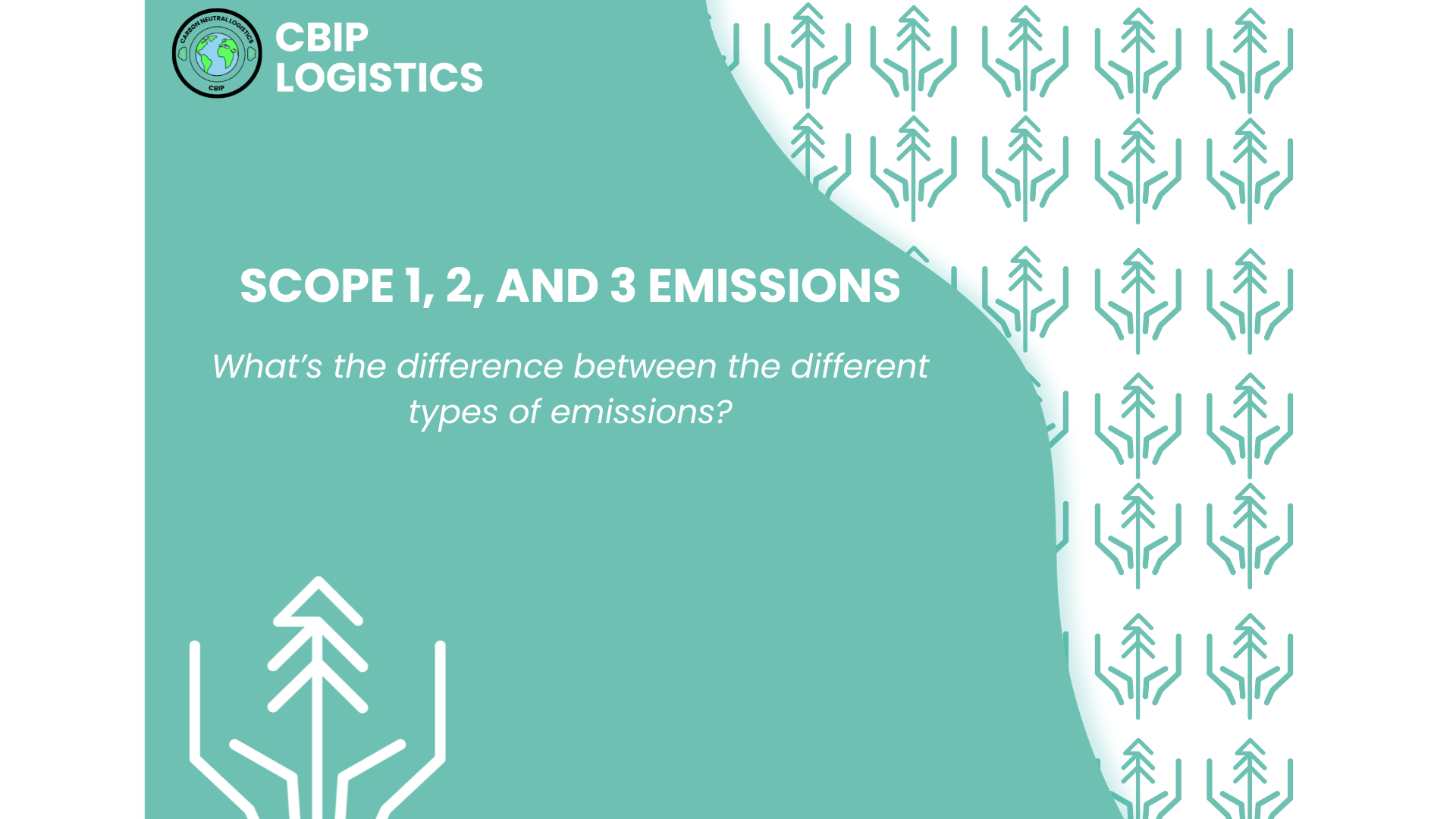Scope 1, 2, and 3 Emissions: What’s the Difference?

Every industry, including transportation, agriculture, electricity, construction, and manufacturing, contributes to carbon emissions globally. Despite the efforts to use greener tactics and renewable energy sources, running a business still produces certain outputs that harm the environment.
There are ways to reduce and counteract some of that output, but you first need to establish where your company’s carbon emissions come from.
Just as each industry and company functions differently, each company’s associated emissions come from a variety of different sources.
In the sustainability world, an important term to know when talking about types of emissions is “scope”. In this article, we’re diving in to define the different types of scope: Scope 1, scope 2, and scope 3 emissions, and where CBIP stands in terms of the three types.
Scope 1 emissions
Scope 1 emissions encompass any carbon emissions that result from a company’s direct operations.
Scope 1 emissions include emissions from sources that are physically owned and operated by the company, like company-owned vehicles and other company facilities.
Typically, companies that own their own sources of manufacturing or transportation have large scope 1 categorized emissions. Big brands in the food and beverage and consumer products industries are some of the largest Scope 1 contributors.
CBIP’s 2021 sustainability report, based on rigorous audits, found that 0% of CBIP’s emissions are scope 1. This is due to the fact that CBIP works with other distribution and logistics partners to move goods around the world.
CBIP’s work doesn’t result in direct emissions from buildings or vehicles that are owned by the company.
Scope 2 emissions
Scope 2 emissions encompass any carbon emissions from indirect sources.
Scope 2 emissions include emissions from sources like
- Electricity
- Heating
- Cooling
- Steam
Companies with large warehouses, stores, or computers/data centers that use a lot of energy often have large scope 2 emissions. Only 0.02% of CBIP’s total emissions in 2021 came from scope 2 sources.
Scope 3 emissions
Scope 3 emissions include all other indirect emissions. These emissions come from a company’s supply chain, and they are often the largest portion of a company’s emissions.
Scope 3 emissions include emissions from sources such as
- Transportation and distribution
- Purchased goods and services
- Capital goods
- Operational waste
- Employee commuting
- Leased assets
- Business travel
- Processing of sold products
- Use of sold products
- End-of-life of sold products
- Investments
Companies with high scope 3 emissions include oil and gas companies and technology companies. All of the activities in these sectors have high emissions coming from indirect sources in their supply chains, as well as emissions from the use of products sold.
Though CBIP’s emissions scope 3 emissions are not high compared to other companies, almost all (99.98%) come from this area.
The importance of understanding emissions
Before we can lower carbon emissions, we must first understand where they come from. Measuring emissions is a crucial first step in the journey to reducing them.
Since CBIP has collected the data, we know that scope 3 emissions are where we need to focus to lower our carbon impact. We are a carbon-neutral company, and we are working to create emissions-reduction targets and strategies.
If you are looking for a green logistics partner that takes sustainability seriously, contact us today!






